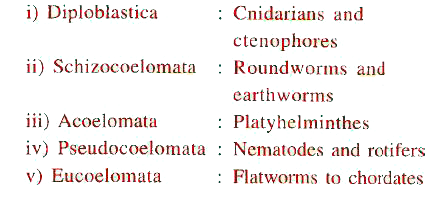Which of the following is correct ?
tan−1x−tan−1yx−y≤1∀x,y∈R,(x≠y)
sin−1x−sin−1yx−y>1∀x,y∈[−1,1],x≠y
cos−1x−cos−1yx−y<1∀x,y∈[−1,1],x≠y
cot−1x−cot−1yx−y<1∀x,y∈R,x≠y
The correct Answer is:A, B
To solve the problem, we need to analyze the given options related to the inverse trigonometric functions and determine which statements are correct based on the Mean Value Theorem (MVT).
1. Understanding the Functions:
We have the following inverse trigonometric functions:
- tan−1(x)
- sin−1(x)
- cos−1(x)
- cot−1(x)
These functions are continuous and differentiable in their respective domains.
2. Applying the Mean Value Theorem (MVT):
The Mean Value Theorem states that if f is continuous on the closed interval (a,b) and differentiable on the open interval (a,b), then there exists at least one c∈(a,b) such that:
f′(c)=f(b)−f(a)b−a
3. Analyzing Option A:
For the function f(x)=tan−1(x):
tan−1(x)−tan−1(y)x−y=f′(c)=11+c2
Since c is between x and y, 1+c2 is always greater than or equal to 1. Therefore,
11+c2≤1
Thus, option A is correct.
4. Analyzing Option B:
For the function f(x)=sin−1(x):
sin−1(x)−sin−1(y)x−y=f′(c)=1√1−c2
Since c is between x and y, √1−c2 is always positive and less than or equal to 1. Therefore,
1√1−c2≤1
Thus, option B is also correct.
5. Analyzing Option C:
For the function f(x)=cos−1(x):
cos−1(x)−cos−1(y)x−y=f′(c)=−1√1−c2
This derivative is negative, and since √1−c2 is always positive, we have:
−1√1−c2≤0
However, according to the question, this should be less than 1, which is not satisfied. Thus, option C is incorrect.
6. Analyzing Option D:
For the function f(x)=cot−1(x):
cot−1(x)−cot−1(y)x−y=f′(c)=−11+c2
This derivative is also negative, and since 1+c2 is always positive, we have:
−11+c2≤0
Again, according to the question, this should be less than 1, which is not satisfied. Thus, option D is also incorrect.
Conclusion:
The correct options are A and B.
We have the following inverse trigonometric functions:
- tan−1(x)
- sin−1(x)
- cos−1(x)
- cot−1(x)
The Mean Value Theorem states that if f is continuous on the closed interval (a,b) and differentiable on the open interval (a,b), then there exists at least one c∈(a,b) such that:
f′(c)=f(b)−f(a)b−a
For the function f(x)=tan−1(x):
tan−1(x)−tan−1(y)x−y=f′(c)=11+c2
Since c is between x and y, 1+c2 is always greater than or equal to 1. Therefore,
11+c2≤1
Thus, option A is correct.
For the function f(x)=sin−1(x):
sin−1(x)−sin−1(y)x−y=f′(c)=1√1−c2
Since c is between x and y, √1−c2 is always positive and less than or equal to 1. Therefore,
1√1−c2≤1
Thus, option B is also correct.
For the function f(x)=cos−1(x):
cos−1(x)−cos−1(y)x−y=f′(c)=−1√1−c2
This derivative is negative, and since √1−c2 is always positive, we have:
−1√1−c2≤0
However, according to the question, this should be less than 1, which is not satisfied. Thus, option C is incorrect.
For the function f(x)=cot−1(x):
cot−1(x)−cot−1(y)x−y=f′(c)=−11+c2
This derivative is also negative, and since 1+c2 is always positive, we have:
−11+c2≤0
Again, according to the question, this should be less than 1, which is not satisfied. Thus, option D is also incorrect.
The correct options are A and B.
Topper's Solved these Questions
- BOOK - CENGAGE ENGLISHCHAPTER - APPLICATIONS OF DERIVATIVESEXERCISE - Subjective Type2videos
APPLICATIONS OF DERIVATIVES
- BOOK - CENGAGE ENGLISHCHAPTER - APPLICATIONS OF DERIVATIVESEXERCISE - Comprehension Type5videos
APPLICATIONS OF DERIVATIVES
- BOOK - CENGAGE ENGLISHCHAPTER - APPLICATIONS OF DERIVATIVESEXERCISE - Comprehension Type5videos
APPLICATIONS OF DERIVATIVES
- BOOK - CENGAGE ENGLISHCHAPTER - APPLICATION OF INTEGRALSEXERCISE - All Questions142videos
APPLICATION OF INTEGRALS
- BOOK - CENGAGE ENGLISHCHAPTER - AREAEXERCISE - Comprehension Type2videos
AREA
Similar Questions
Which of the following are correct ?
View SolutionWhich of the following are correct ?
 View Solution
View SolutionWhich of the following are correct ?
View SolutionWhich of the following are correct?
View SolutionWhich of the following are correct?
View SolutionWhich of the following are correct?
View SolutionWhich of the following are correct?
View SolutionWhich of the following are correct
View SolutionWhich of the following are correct?
View SolutionWhich of the following are correct?
View Solution

